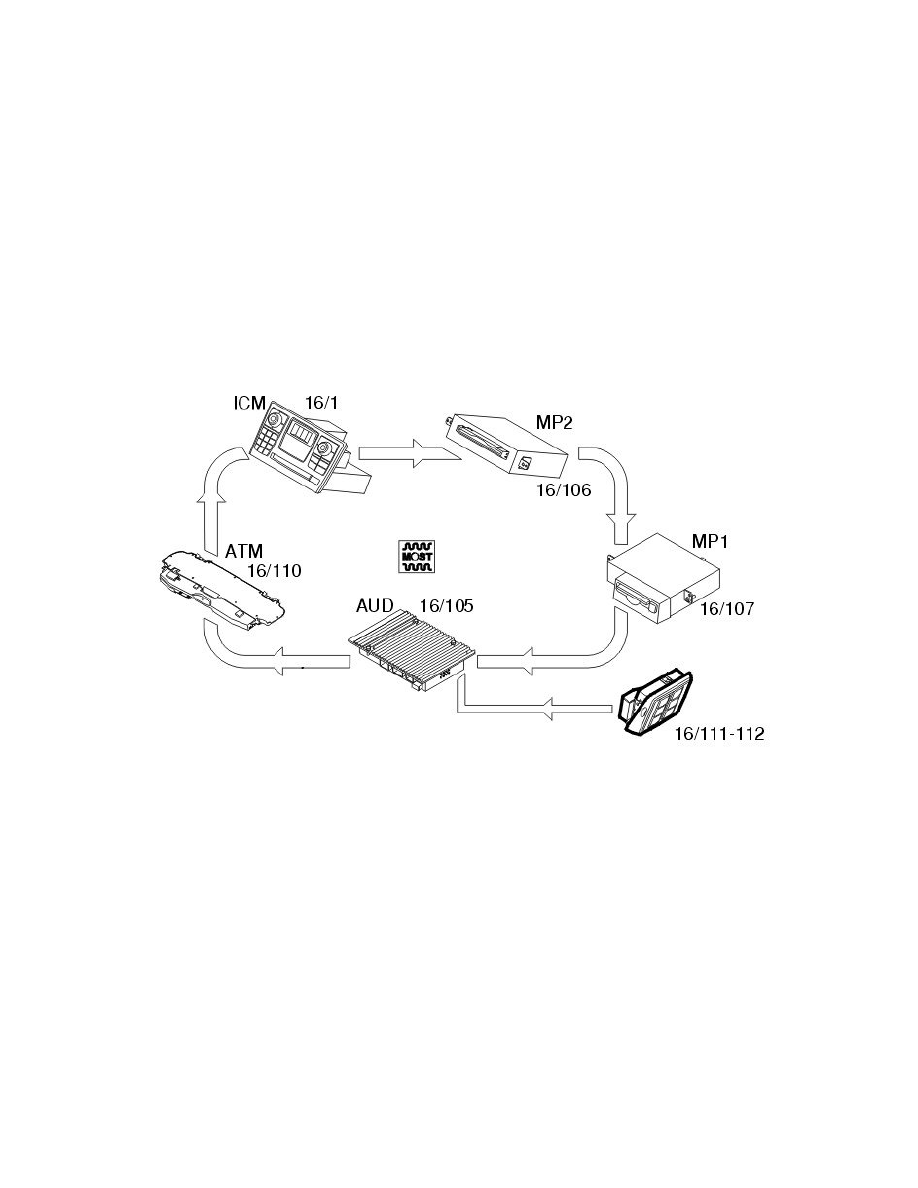XC90 AWD L5-2.5L Turbo VIN 59 B5254T2 (2005)

-
the MD module (MP1) (16/107) for mini discs
-
the CD module (MP2) (16/106) for compact discs.
The audio module (AUD) can generate simple sound signals which are used for example to warn the driver and passengers if there are problems. These
signals are transmitted from the infotainment control module (ICM) to the audio module (AUD).
When the audio module (AUD) has received optical signals on the MOST network, these signals are sent onwards as analog signals to the directly
connected front (16/4, 16/3) and rear (16/6, 16/5) loudspeakers. Certain versions of the control module have several directly connected components such
as front treble speakers (16/55, 16/56), D-post loudspeakers (16/58, 16/57), center loudspeaker (16/26) and headset sockets (16/111, 16/112). The
control module transmits analog signals to these components.
The microphone (16/77) is directly connected to the audio module (AUD). The microphone transmits analog signals to the control module.
When sound compensation is required, the infotainment control module (ICM) transmits sound compensation signals via the MOST network to the audio
module (AUD).
Certain versions of the audio module (AUD) can also generate a digital subwoofer signal from the signal transmitted to the audio module (AUD). This
signal is then transmitted via the MOST network to the subwoofer module (SUB) (16/79). The signal which is transmitted from the audio module (AUD)
to the subwoofer module (SUB) is a summated and filtered loudspeaker signal.
The bass speaker signals are transmitted from the audio module (AUD) on a dedicated channel on the MOST network.
When the MOST network starts after the ignition is switched on, the infotainment control module (ICM) transmits data to the audio module (AUD)
indicating whether or not there is a subwoofer module (SUB) available on the MOST network.
Selecting the sound source and track from the headset panel
There are two identical button arrangements (16/111, 16/112) on the headset panel, one for each socket. These buttons are used to change the sound
source and track.
When a button is pressed on the headset panel, the audio module (AUD) identifies which button it was. This signal is transmitted between the headset
panel and the audio module (AUD) on a directly connected cable. The audio module (AUD) (16/105) then sends the data onwards via the MOST
network to the infotainment control module (ICM) (16/1) which in turn transmits the data onwards to the selected sound source.
The sound sources which can be selected are:
-
radio (ATM) (16/110)
-
CD player (MP2) (16/106)
-
MD player (MP1) (16/107).
Diagnostic Functions
Diagnostic functions
General
The control module has a built-in diagnostic system, Volvo Diagnostic, which continuously monitors internal functions as well as input and output
signals.
Diagnostic trouble codes (DTCs)
A diagnostic trouble code (DTC) is stored if the control module detects a fault. A fault which is detected in the most recent operating cycle is defined as
